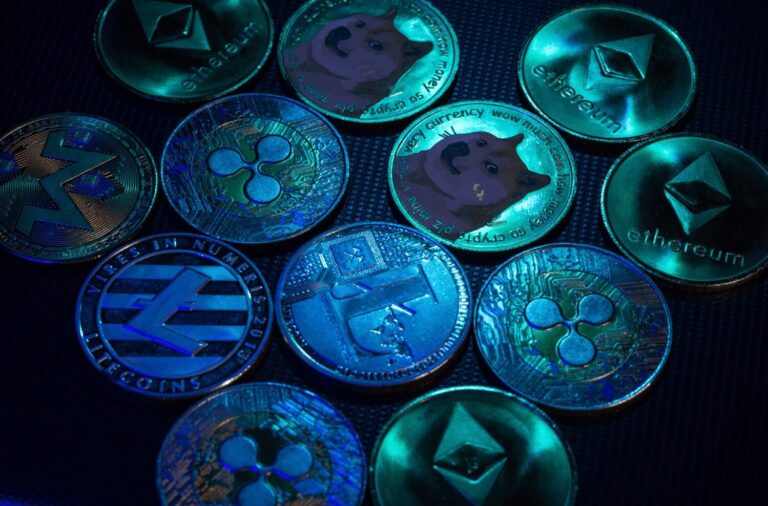
The cryptocurrency world has seen its fair share of controversies, and recently, Ripple found itself at the center of another debate. Chris Larsen, Ripple’s co-founder, publicly clarified the company’s involvement—or lack thereof—in the contentious “Change the Code” campaign aimed at transforming Bitcoin’s energy use.
This campaign, which collaborated with environmental organization Greenpeace, sought to urge the Bitcoin community to reconsider its reliance on the energy-heavy proof-of-work (PoW) consensus mechanism. Many within the crypto sphere viewed the initiative as a direct challenge to Bitcoin’s core operations, sparking heated discussions about the environmental impact of mining and Ripple’s position in this debate.
Larsen emphasized that Ripple itself did not bankroll the “Change the Code” campaign. Instead, he positioned his support for the initiative as a personal stance rather than an official company action. This distinction aims to distance Ripple from accusations that it was trying to undermine Bitcoin for competitive advantage. Larsen also pointed to progress within the Bitcoin ecosystem, highlighting a recent University of Cambridge study that showed a significant portion of Bitcoin mining now utilizes renewable energy sources such as nuclear, wind, and hydropower. Additionally, the report noted that miners increasingly harness flared natural gas—which would otherwise be wasted—to power their rigs. These insights paint a more nuanced picture of Bitcoin mining’s environmental footprint than often portrayed.
Still, despite these nuances, the “Change the Code” campaign remains polarizing. Many Bitcoin supporters continue to view it as antagonistic, accusing Ripple of fostering division within the cryptocurrency space and possibly using environmental concerns as leverage to promote XRP, Ripple’s native token.
Ripple’s “Skull of Satoshi” Donation Fuels Mixed Reactions
In a symbolic move that further stirred the pot, Ripple recently donated the “Skull of Satoshi” artwork to the Bitcoin community during the 2025 Bitcoin Conference held in Las Vegas. This piece, which had been a stark reminder of Bitcoin’s energy consumption issues, was presented as a gesture of goodwill and now resides on display at the Bitcoin Museum in Nashville.
Brad Garlinghouse, Ripple’s CEO, described the donation as an “olive branch.” He underscored Bitcoin’s robustness as a system and called on the wider crypto industry to unite around shared objectives like fostering innovation, securing regulatory clarity, and promoting financial inclusion. Garlinghouse’s message suggested a shift from rivalry toward collaboration between Ripple and the broader crypto ecosystem.
Yet, not everyone welcomed this sentiment. Matthew Sigel, head of digital assets at VanEck, publicly criticized Ripple’s move, demanding a formal apology for Ripple’s alleged financial support of Greenpeace’s anti-Bitcoin campaign. On social media, Sigel questioned Garlinghouse, challenging whether the artwork donation constituted a genuine apology.
Ripple’s internal leadership also entered the fray. Ripple’s CTO, David Schwartz, defended XRP against Bitcoin maximalists who portray it as overly centralized. Schwartz pointed out that XRP’s ledger operates without a traditional issuer, maintaining decentralization despite Ripple’s involvement. Meanwhile, some in the community disparaged XRP attorney John Deaton’s presence at the Bitcoin 2025 conference, labeling him dismissively as “an XRP guy,” revealing ongoing tensions between Bitcoin loyalists and Ripple supporters.
XRP Price Remains Steady Amid Market Uncertainty
While Ripple works to smooth relations and clarify its position, XRP’s market performance tells a more cautious story. Despite these high-profile gestures and news, XRP’s price has hovered largely flat, trading around $2.29 and slipping over 5% over the past week. The token has oscillated within a narrow range of roughly $2.24 to $2.47, suggesting a phase of consolidation.
Trading volumes tell a slightly different tale, with a 28% uptick to $2.63 billion, and on-chain activity climbing 21.7% in just 24 hours. Derivatives volume also surged by over 20%, reaching $3.95 billion. However, open interest—the total value of outstanding leveraged contracts—edged down slightly by nearly 1% to $4.78 billion, indicating a mixed mood among traders using leverage.
Technically, XRP’s near-term outlook remains subdued. The Relative Strength Index (RSI), a momentum indicator, sits at a neutral 46. Longer-term moving averages (the 100- and 200-day simple moving averages) are positioned above current price levels, which often signals resistance. Shorter-term averages like the 10- and 30-day exponential and simple moving averages are flashing sell signals. Should XRP push above $2.40 convincingly, it might target $2.60. Conversely, dipping below $2.24 could expose the token to further declines toward $2.10.
Overall, Ripple’s recent efforts to clarify its stance and extend olive branches to the Bitcoin community have produced a mixed reception. While some praise the company for seeking harmony and promoting collaboration, others remain skeptical, scrutinizing Ripple’s intentions and past actions. As XRP’s price consolidation shows, market participants are still weighing these developments carefully, waiting to see whether this rapprochement can translate into stronger momentum both within the industry and on trading charts.


